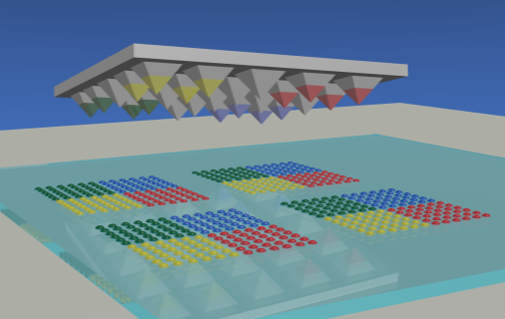
Writing Behavior of Phospholipids in Polymer Pen Lithography (PPL) for Bioactive Micropatterns
-
Author:
A. Angelin, U. Bog, R. Kumar, C.M. Niemeyer, M. Hirtz
-
Source:
Polymers 11 (2019) 891
- Date: 2019
-
Lipid-based membranes play crucial roles in regulating the interface between cells and their external environment, the communication within cells, and cellular sensing. To study these important processes, various lipid-based artificial membrane models have been developed in recent years and, indeed, large-area arrays of supported lipid bilayers suit the needs of many of these studies remarkably well. Here, the direct-write scanning probe lithography technique called polymer pen lithography (PPL) was used as a tool for the creation of lipid micropatterns over large areas via polymer-stamp-mediated transfer of lipid-containing inks onto glass substrates. In order to better understand and control the lipid transfer in PPL, we conducted a systematic study of the influence of dwell time (i.e., duration of contact between tip and sample), humidity, and printing pressure on the outcome of PPL with phospholipids and discuss results in comparison to the more often studied dip-pen nanolithography with phospholipids. This is the first systematic study in phospholipid printing with PPL. Biocompatibility of the obtained substrates with up to two different ink compositions was demonstrated. The patterns are suitable to serve as a platform for mast cell activation experiments.
